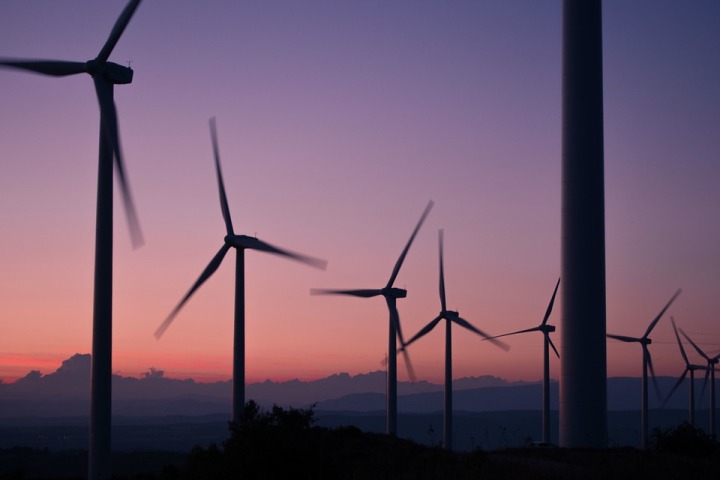Kenya takes giant stride in renewable energy sector with AfDB support
Presently, renewable sources account for nearly 80% of Kenya’s energy supply.

- Country:
- Kenya
Kenya has taken less than a decade to make giant strides in its energy sector. Key to this are two iconic renewable energy projects that have benefited from the decisive support of the African Development Bank: Turkana Wind Farm and Menengai Geothermal Power Station.
The figures speak for themselves - the nationwide electrification rate in Kenya has leapt from 28% in 2013 to more than 60% in 2017, according to data provided by President Uhuru Kenyatta at an energy roundtable held in January 2018. The government’s next goal is to increase the electrification rate to 80% by 2020.
Two years to the target date, Kenya is on track and making great strides despite the severe drought it has experienced and an increase in demand of 11% per year. This progress is due to Lake Turkana Wind Farm and Menengai Geothermal Power Station.
These two projects have benefited from funding from the African Development Bank, which has also worked closely with the Kenyan Government and development partners such as the French Agency for Development and the European Investment Bank, to ensure the diversification of Kenya’s energy supply, with a focus on clean, reliable and low-cost energy sources. They have also worked to strengthen the national distribution grid by increasing renewable energy installed power by some 10%.
"Six million homes, that is, 69.4% of the population, have electricity supply," said Ken Tarus, CEO of the national electricity distribution company, Kenya Power, in June 2017.
The result of this is that the load shedding and other untimely power cuts of the past are now much less frequent. In addition, the government reduced the retail price of electricity by 8% in July 2018.
Turkana with the wind in its sails
Lake Turkana Wind Farm project, located in the biggest lake in a desert setting in the world, took 15 years to build. Named the "African Renewables Deal of the Year", in 2014 by Thomson Reuters, this wind farm is now the largest in Africa. It has hundreds of wind turbines whose blades turn in winds of up to 11 metres per second, about 25 miles per hour. Located in the north-west of Kenya, it has a power output of 300 megawatts.
The Bank served as lead arranger for 436 million euros in senior credit facilities towards the project cost of 623 million euros. The Bank also provided a partial risk guarantee from the African Development Fund (ADF) of 20 million euros, for the part of the project devoted to the transmission line.
Geothermal energy going full steam
The second major project, Menengai Geothermal Power Station, located some 180 km northwest of Nairobi, is another example of Kenya's geothermal potential. With an estimated output of about 10,000 MW, it supplies 500,000 homes (including 70,000 in rural areas) and 300,000 businesses. Naturally, the plant benefits from its exceptional geographical location on the iconic Rift Valley, which runs for more than 6000 km through the country and into southern Africa.
As a result of the two projects, Kenya's foremost energy source in the last two years has been geothermal. As of 2018, Menengai is the largest geothermal energy producer on the African continent and the ninth biggest worldwide. Since they became operational, both Turkana and Menengai have run at full capacity.
Once again, Bank financing was central to Menengai’s construction co-funded by the Bank - 96.5 million euros - the Climate Investment Funds hosted by the African Development Bank Group (19.3 million euros). Other partners included the French Agency for Development, (55.5 million euros), the European Investment Bank (29 million euros) and the Government of Kenya (190 million euros).
In March 2018, the government began a project to increase the capacity of Menengai Geothermal Power Station and at the same time decided to invest more in solar energy.
In June 2018, Kenya awarded a 20-year contract for the purchase of 40 megawatts annually from private electricity production company, Kenergy Renewables. The power plant, estimated to cost 60-70 million dollars, will be located in Laikipia, in northern Kenya, and will serve some 50,000 households. This represents another important step in the march towards universal access to electricity in Kenya.
Presently, renewable sources account for nearly 80% of Kenya’s energy supply.
ALSO READ
Vijay Murugesh Nirani: Steering India's Renewable Energy Revolution
ADB Approves $30M Facility to Boost Sri Lanka's Renewable Energy Goals and Power Sector Sustainability
Canon Partners with MED-EL to Empower Hearing-Implanted Youth in Kenya Through Photography
Balancing Power: A Game Changer for Renewable Energy Success
Kosovo Urged to Invest $2.8 Billion in Climate Resilience and Renewable Energy Transition by 2030: World Bank Report










